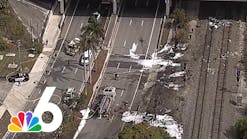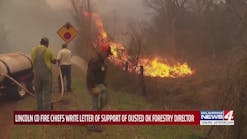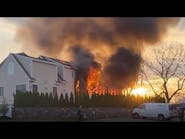It happens far too often. Understaffed apparatus leave the firehouse and arrive on the scene of a structure fire. We want to follow the ICS rules and establish command, but we also have the task of initial search/attack. So how does one create command structure and fight fire at the same time?
The term “Combat Incident Command” is not a new one. In fact you can go all the way back to 1988 when the National Fire Protection Association released a video entitled “Fire Command in Action” that I think is just as relevant today as it was when Chief Alan V. Brunacini of the Phoenix Fire Department (AZ) made a no-bones-about-it presentation on what was then a pioneering principle. Believe it or not, you can watch the three-part, grainy, original version on www.youtube.com (URL http://www.youtube.com/watch?v=vXhqR6rVJz4 ).
The concept of Incident Command is just now becoming ingrained into our smaller departments; these basic principles have been in place for a number of decades. Which brings me to my first point. This IC stuff doesn’t integrate well into the psyche of a first arriving engine that has the adrenaline rush of Mississippi River levy breach. A dear friend of mine, who is well acquainted with a “BIG” city fire department made the remark to me once that it took this “BIG” city department over a decade to get into the groove of using the Incident Command System (ICS). The reason why ICS is sometimes hard to embrace is because it stalls the “go get’er” attitude we approach the fire scene with. No one wants to be “stuck” with the Incident Commander position and miss out on packing up and making entry. It’s this “stuck with IC” mindset that kills the real necessity of leadership on the fire scene.
But even more basic is the fact that some first due engine companies are not even companies. The engineer, officer, pipeman may all be wrapped up in ONE PERSON. So how do you combat the fire and assume command? You just do. The first on-scene engine has to make some critical, initial decisions. However, there is no “deciding” to assume command. If you are first on-scene, you must initiate command. It doesn’t have to be some pompous, long-winded schpeel. You have to make it a part of your out-the-pumper-window scene size-up. It is one sentence during that size-up that brings stability to the fire scene. Here it is…”302 (or whatever your badge # is) is assuming Main Street (location) Command.” I’ll dive into the complete steps later, but for now what I want you to get burned into your brain is this: Assume Command. This doesn’t take you out of the fight, but rather allows you to guide the incoming apparatus and manpower to have a clear picture of what you have found and that someone is leading the charge within the first few seconds of arriving on scene. The first few seconds of a fire scene operation are crucial to getting things off on the right foot.
I will be sharing with you more about this subject in Part 2 of a 4 part series. TO BE CONTINUED...





